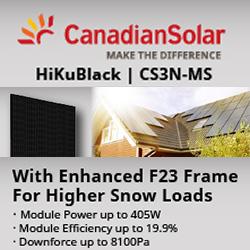Central Inverter vs. Micro-Inverters: Which One is Better?
Solar photovoltaic panels generate DC (Direct Current) electricity. However, almost every household and business in Southern California uses AC (Alternating Current) electricity. A solar inverter changes DC power to AC power so it can provide electricity that is suitable for use at home or business.
Solar photovoltaic panels generate DC (Direct Current) electricity. However, almost every household and business in Southern California uses AC (Alternating Current) electricity. A solar inverter changes DC power to AC power so it can provide electricity that is suitable for use in your home or business. Also, this conversion allows you to "backfeed" electricity to the utility grid to which the inverter is connected so that you can sell electricity back to the utility company (a process that is known as net metering).
There are two types inverters used in solar installations today: 1) a central "string" inverter or 2) multiple small "micro" inverters. Micro-inverters are relative newcomers to the marketplace and despite their higher cost (as much as 30% more than a central inverter) their popularity has been growing rapidly in Southern California. In 2008 there were only 18 residential solar systems that possessed micro-inverter technology, but by the end of 2012 that number had increased to 12,000.1
A typical central inverter is located at ground level, usually near the Main Electrical Service Panel. It combines all of the power from multiple solar panels in this one central location. As a result, voltages can be quite high in the central inverter, sometimes as much as 600 volts DC. Micro-inverters are connected to each solar panel in the system and immediately convert DC power to AC current, usually at 240 volts. Although both voltages can be dangerous, there is an improved safety factor when using micro-inverters that have lower voltages.
Other perceived advantages of micro-inverters:
Since each solar panel has its own inverter, a failure would mean that only one panel is not working;
One panel's poor performance would not affect its neighbor's production, but if there is a shaded panel in a system with a central inverter then it can alter the energy output of other panels;
Multiple orientations of panels are possible with micro-inverters while a central inverter usually requires its panels to all face in the same direction.
On the other hand, there are disadvantages associated with micro-inverters:
Because they are rooftop-mounted, there are higher installation costs and higher costs associated with future serviceability;
A micro-inverter is installed on the roof under the solar panel where high heat could reduce its life, whereas central inverters have a documented history of reliable performance;
Voltage drops for long runs at 240 volts of AC power in micro-inverters is greater than that with higher voltage DC wiring associated with central inverters.
Although performance and failure rates are more predictable with central inverters at this point in time, the future looks promising for individual or micro-inverters. If reliability and cost trends continue, central "string" inverters may become a feature of the past in the not too distant future.
The fact that micro-inverters allow AC power output of a solar system to be interrupted by a switch located at ground level markedly improves safety for first responders in the event of a fire. In addition, the ability to design a system with minimal regard for solar panel orientation opens up more roof area for module deployment. Lastly, since many micro-inverter manufacturers provide module-level monitoring, a defective unit will be recognized and replaced, hopefully in time to take advantage of its warranty. This may become more crucial in time as smaller foreign manufacturers leave the US market.
All in all, micro-inverter technology is a winner on many levels, but only time will decide which technology crosses the finish line.
1Data from the CSI for the utilities of SCE, PG&E and SDG&E.
Featured Product

